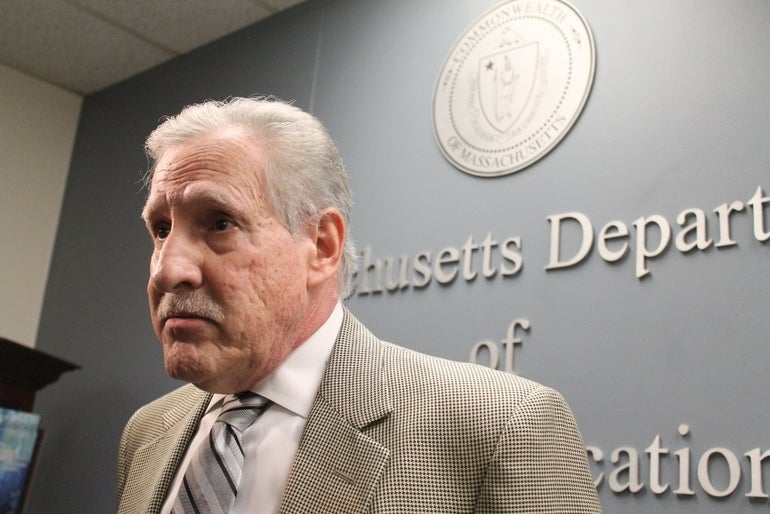College and university leaders need to prepare to “change as institutions” to help students of color feel more supported on campus and expand access to higher education among historically disadvantaged groups, a top state official said Monday.
Massachusetts has long prided itself as a bastion of educational success, and while the state is among the best in the nation in college degree attainment, Higher Education Commissioner Carlos Santiago said it “does not look very good” when gaps by race and ethnicity are considered and lands in the middle of the pack compared to other states.
State education officials are grappling with how to address those disparities, which Santiago said have persisted for decades in the face of failed reform efforts, and plan to roll out a decade-long plan with new thinking at both the overarching and individual campus level.
“We need to change as institutions of higher education. We need to turn back a lot of those policies, well-intentioned over the years, but the last 50 years have shown little progress in terms of closing the disparities,” Santiago said at a Board of Higher Education meeting. “This is where we need to focus, and it’s going to be tough conversations on the campus, but needed conversations.”
The commissioner, who is preparing to depart this summer after seven years in the position, did not dive into details on which policies he believes have fallen short on addressing higher education shortcomings that leave people of color with fewer supports, and a Department of Higher Education spokesperson declined to elaborate.
Board members took early steps Monday toward stitching together a decade-long course of action aimed at achieving the kind of on-campus racial equity that has long remained out of reach, walking through a presentation from outside consultants tapped to help craft an approach.
Key details have yet to be ironed out, but the wide-ranging plan will set goals for both the executive branch and for public colleges and universities such as making financial aid more accessible and beneficial to students of color, working social justice and bias discussion into higher educator professional development, and updating hiring efforts to make campus staff more representative of the student body.
Santiago said nonwhite students have long called for “greater representation of faculty, staff and leadership that would reflect some of their own lived experiences,” calling it a worthwhile but tricky objective.
“That’s not something that’s easy, because in fact, historically, we have had small numbers,” Santiago said. “Historically, I go from after the Brown v. Board of Education decision, where an entire system of 100,000 faculty, staff and leaders of color were part of a system that was done away with through integration. Integration was a very positive thing, but there were outcomes that gave rise to some of the deficiencies we’re seeing now in representation.”
Public higher education in Massachusetts already finds itself caught up in major demographic currents that pose significant challenges. Enrollment at community colleges in particular has declined over the past decade, with a sharp drop in 2020 and 2021 during the COVID-19 pandemic.
And amid those trends, people of color continue to represent a growing share of the student population.
In the fall 2012 semester, about 58 percent of the roughly 100,000 students enrolled in Massachusetts community colleges were white, according to Department of Higher Education data. By the fall 2021 semester, in which about 65,000 students were enrolled at community colleges, the share of white students dropped to 47 percent while the share grew to 13.3 percent for Latino students, 3.4 percent for Asian and Pacific Islander Students, and 9.6 percent for African-American students.
State universities saw a similar trend, data show. Total enrollment and enrollment by white students declined from 2012 to 2021, and the headcount of Latino, Asian or Pacific Islander and African-American students all increased over the decade.
The growth was especially pronounced among Latinos, who represented 7 percent of the state university system student body in 2012 and more than 13 percent in 2021.
“Increasingly, the K-12 system has changed. Increasingly, if you look at our community colleges, two-thirds of the students of color are in our community colleges. Look at the state universities: a number of them have become and are emerging as Hispanic-serving institutions,” Santiago said. “Demographic change is impacting everything we do.”
One pressure point board members want to explore more is the Legislature’s role, particularly dealing with funding and affordability questions.
The Department of Higher Education is working with consulting firm Deloitte to craft its 10-year racial equity strategic plan, and employees from the company presented an outline to board members on Monday.
Santiago and the company plan several additional meetings in the coming weeks with college and university presidents, staff and faculty, and students to gather more feedback on the effort, and the state also conducted campus surveyss last year.
“Everybody’s going to have multiple bites at the apple,” Santiago said.
The commissioner said Monday that the 10-year racial equity plan will be “a little more universal” than other multi-year strategic plans and will seek substantial changes both structurally and at the individual campus level.

